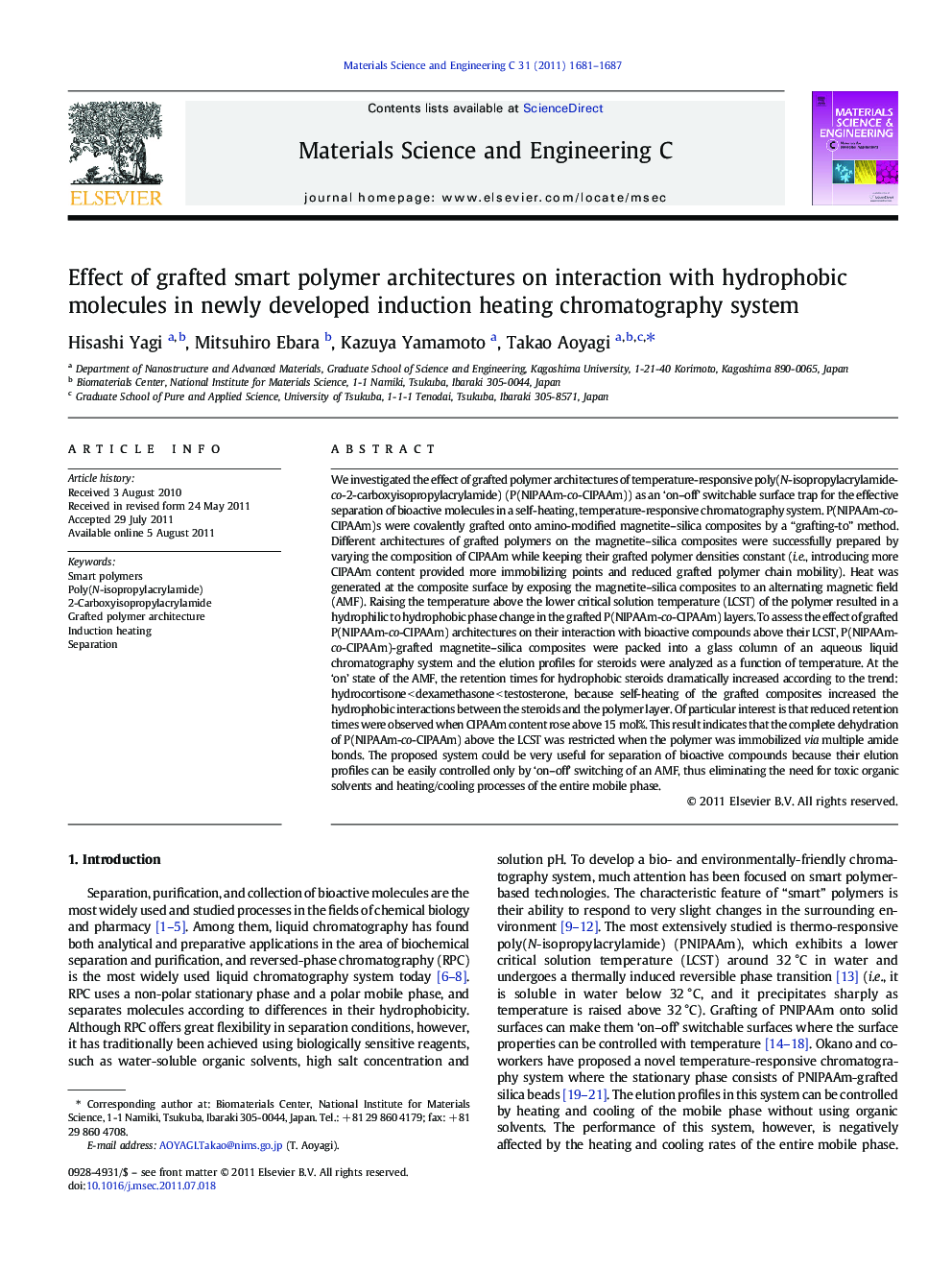| کد مقاله | کد نشریه | سال انتشار | مقاله انگلیسی | نسخه تمام متن |
|---|---|---|---|---|
| 1429817 | 987186 | 2011 | 7 صفحه PDF | دانلود رایگان |

We investigated the effect of grafted polymer architectures of temperature-responsive poly(N-isopropylacrylamide-co-2-carboxyisopropylacrylamide) (P(NIPAAm-co-CIPAAm)) as an ‘on–off’ switchable surface trap for the effective separation of bioactive molecules in a self-heating, temperature-responsive chromatography system. P(NIPAAm-co-CIPAAm)s were covalently grafted onto amino-modified magnetite–silica composites by a “grafting-to” method. Different architectures of grafted polymers on the magnetite–silica composites were successfully prepared by varying the composition of CIPAAm while keeping their grafted polymer densities constant (i.e., introducing more CIPAAm content provided more immobilizing points and reduced grafted polymer chain mobility). Heat was generated at the composite surface by exposing the magnetite–silica composites to an alternating magnetic field (AMF). Raising the temperature above the lower critical solution temperature (LCST) of the polymer resulted in a hydrophilic to hydrophobic phase change in the grafted P(NIPAAm-co-CIPAAm) layers. To assess the effect of grafted P(NIPAAm-co-CIPAAm) architectures on their interaction with bioactive compounds above their LCST, P(NIPAAm-co-CIPAAm)-grafted magnetite–silica composites were packed into a glass column of an aqueous liquid chromatography system and the elution profiles for steroids were analyzed as a function of temperature. At the ‘on’ state of the AMF, the retention times for hydrophobic steroids dramatically increased according to the trend: hydrocortisone < dexamethasone < testosterone, because self-heating of the grafted composites increased the hydrophobic interactions between the steroids and the polymer layer. Of particular interest is that reduced retention times were observed when CIPAAm content rose above 15 mol%. This result indicates that the complete dehydration of P(NIPAAm-co-CIPAAm) above the LCST was restricted when the polymer was immobilized via multiple amide bonds. The proposed system could be very useful for separation of bioactive compounds because their elution profiles can be easily controlled only by ‘on–off’ switching of an AMF, thus eliminating the need for toxic organic solvents and heating/cooling processes of the entire mobile phase.
► We developed the self-heating temperature-responsive chromatography system.
► “Grafting to" method with NIPAAm-CIPAAm was useful to prepare the packing materials.
► The grafting architecture is critical for effective separation in the chromatography.
Journal: Materials Science and Engineering: C - Volume 31, Issue 8, 1 December 2011, Pages 1681–1687